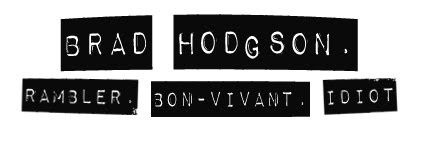In our recent exhibition exercise in which we were asked to exhibit a piece of current work in order to prepare us for the degree show. I exhibited a piece of audio which was in fact a older segment from the film, and played this from a speaker situated in a plinth which stood in front of a still from the film. Whilst only intended as a way of linking the sound to the landscape in which i was created and printed cheaply using standard inks, the image gained a lot of comments due to it's striking tonal quality which was said to be reminiscent of traditional landscape paintings.
I found these comments very interesting as whilst it was not intended to be the main focus the editing which I had done on the film so far as depicted in the still was already well received.
This has led me to look further into examples, based purely on their tonal depth and aesthetic qualities and how they relate to the landscape in which they depict.
As this researched was spurned by comments relating to landscape painting, this is where I started.
Peter de Wint was my first port of call as I wanted to look at how painters themselves have looked at the sky as a means of expression, with sky shots making up a lot of my film - varying degrees at different lights. Using particularly light gestural movements as a tool to convey the desired emotion for their piece, both personal and how they would like the piece to look in terms of tone.
A Cornfield - Peter De Wint - 1815
I admire many video works of this era in particular the cinematography of William Friedkin and Owen Roizman in the 1971 film French Connection owes much to the stock of film it was shot with. The faded nature of the imagery and the deep contrast can be seen in the below screen shot of Sidney Lumet's 1973 film 'Serpico'.

Continuing this element of achieving modern work with vintage techniques is the photographer Neil Krug, whose use of dated film stock in extreme weather conditions edits the photographs itself given an immense aesthetic that increases the power of the images and ultimately makes the work transmit better making their desired effect greater.
Aiming for this kind of vintage tone which I hope to achieve by combining this with the clarity gained from shooting in HD will I hope emphasize the drama and atmosphere already in the landscape.
In terms of soundtrack I originally intented to achieve this relatively simply - I recorded myself playing guitar over footage which whilst sounding great, especially through the high quality speakers of the sound booth, just didn't have an edge that I was hoping for ad just sounded like it was, guitar played over footage.
I then had a eureka moment whilst playing the film back I accidently lent on the shift key which in final cut plays the footage in reverse, including the audio which was then transformed into a haunting sound with no obvious strum pattern distinguishable. I then played in sequence to reversed footage, so when I made the footage play normaly the audio would then be reversed.
Always referring back to Arthur C Clarke's Transience in particular when included the segments of the snow landscapes filmed on the morning after the main day of filming. The contrast between the snow landscapesacting a a similar tool as the sea and desert in 'Transience' the short story.
In terms of soundtrack I originally intented to achieve this relatively simply - I recorded myself playing guitar over footage which whilst sounding great, especially through the high quality speakers of the sound booth, just didn't have an edge that I was hoping for ad just sounded like it was, guitar played over footage.
I then had a eureka moment whilst playing the film back I accidently lent on the shift key which in final cut plays the footage in reverse, including the audio which was then transformed into a haunting sound with no obvious strum pattern distinguishable. I then played in sequence to reversed footage, so when I made the footage play normaly the audio would then be reversed.
Always referring back to Arthur C Clarke's Transience in particular when included the segments of the snow landscapes filmed on the morning after the main day of filming. The contrast between the snow landscapesacting a a similar tool as the sea and desert in 'Transience' the short story.
Using cross disolve sparingly has added the disorientating effect I was after, coupled witth he shrill and strange nature of the soundtrack, the two elements work together to create a really haunting atmosphere that heightens the emotions experienced when out in the landcape itself, as this is my basic intention - to represent the alienating, vastness and magnitude on what is ultimately a 2D medium.
Whilst not adhearing to any distinctly strict chord progression, there is a definate theme and haunting build up in certain segments which I wanted to float road very much like the footage does, especially the parts filmed at the full mercy of the wind owing to a blurry, headache inducing feeling that adds to the consuming nature of the piece.
When showing it to others for feedback they have agreed how effective this eireey sound is to the piece.
Something that became intrinsic to me whilst creating the piece was the simultaneous editing process, whereby I would play over the video footage I was in the middle of editing in order to gain the closeness and ensure the two mediums linked together and locked in with each other as much as possible.


